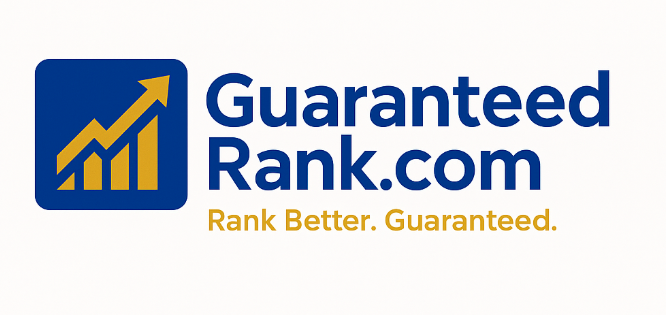Recovering from an SEO penalty in eCommerce can be a challenging and multi-step process, but it is certainly possible with the right approach. Here’s a structured guide on how you can recover from an SEO penalty:
1. Identify the Type of Penalty
- Manual Penalty: This is a penalty issued by Google after a human reviewer identifies a violation of Google’s Webmaster Guidelines (e.g., link schemes, thin content, or keyword stuffing). You can check if you’ve received a manual penalty in Google Search Console under the "Manual Actions" section.
- Algorithmic Penalty: These penalties are the result of algorithm updates (e.g., Google Penguin or Google Panda) that automatically detect issues. These are harder to diagnose directly but can be inferred from traffic drops, especially after an algorithm update.
Action: Monitor your Google Search Console and analytics (Google Analytics) for significant traffic drops or issues flagged by Google.
2. Conduct an SEO Audit
Use a comprehensive SEO audit to identify potential issues that might have triggered the penalty. Focus on:
- Backlink Profile: Poor-quality or spammy backlinks could lead to penalties. Use tools like Ahrefs, SEMrush, or Google Search Console to analyze your backlinks. Look for:
- Links from irrelevant or low-authority sites
- Links with excessive anchor text optimization (e.g., overuse of the same keyword)
- Paid or unnatural link-building schemes
- Content Quality: If your content is thin, duplicate, or low-value, it might trigger algorithmic penalties like Panda. Review your product descriptions and blog posts to ensure they are unique, informative, and valuable to users.
- On-Page SEO: Check for keyword stuffing, poor meta descriptions, missing or duplicate title tags, and other on-page SEO issues.
- User Experience: Metrics like bounce rate, page load times, and mobile responsiveness are factors that impact rankings. A bad user experience can indirectly lead to penalties.
3. Fix Technical Issues
- Crawl Errors: Ensure Google can access all your important pages. Use Google Search Console to identify crawl errors and fix them.
- Duplicate Content: If you have duplicate content (especially common in eCommerce with multiple product variations or similar product descriptions), resolve this using canonical tags or by rewriting content to make it unique.
- Thin Content: If you have product pages with little or no original content, add more descriptive text, customer reviews, and related information to make the page valuable for users.
- Site Speed & Mobile Optimization: Google favors websites that load quickly and are mobile-friendly. Use tools like Google PageSpeed Insights to identify areas for improvement.
4. Address Backlink Issues (for Manual Penalty)
- Disavow Bad Links: If you’ve identified harmful backlinks, create a disavow file and submit it to Google using the Google Disavow Tool. This tells Google that you don’t want those links to be considered when evaluating your site.
- Remove Toxic Links: Reach out to webmasters of low-quality or spammy websites that link to you and request removal of the links.
5. Reconsideration Request (for Manual Penalty)
- After cleaning up any manual penalty issues (e.g., bad backlinks, unnatural content practices), you can file a Reconsideration Request via Google Search Console. In this request, provide a clear explanation of what actions you’ve taken to resolve the issues. Be honest and transparent, as Google values this.
Tip: If you’ve experienced a manual penalty, make sure you document your efforts to fix the issues in a way that shows Google you’re committed to following the guidelines.
6. Monitor Traffic and Rankings
- After you’ve made the necessary fixes, monitor your traffic through Google Analytics and rankings in Google Search Console. Algorithmic penalties may take longer to recover from, and you may need to wait for Google to re-crawl and reassess your site.
- Keep track of any improvements or new issues that might arise.
7. Optimize for Long-Term Success
- Quality Content: Focus on creating high-quality, relevant content for your eCommerce site. For example, add value with detailed product descriptions, user-generated content (reviews), and informative blog posts.
- Link Building: Focus on earning high-quality backlinks through outreach, guest posts, partnerships, and content marketing. Avoid any black-hat techniques.
- Technical SEO: Regularly audit your site for any potential technical issues, broken links, and speed optimizations.
- User Experience (UX): Prioritize a positive user experience, which includes fast loading times, easy navigation, and mobile-friendliness.
8. Stay Updated with Google’s Algorithm Updates
- Google frequently updates its algorithms. Stay informed about updates that could impact eCommerce sites, such as the Core Web Vitals update, BERT, and Product Review updates. This will help you stay ahead of the curve and avoid future penalties.
Conclusion:
The recovery process from an SEO penalty can take time, especially for eCommerce sites that might have complex content, backlinks, or technical structures. By identifying the penalty type, fixing the root cause, and adhering to Google’s Webmaster Guidelines, you can set yourself up for long-term SEO success. Patience and consistent effort are key when recovering from SEO penalties.











0 Comments